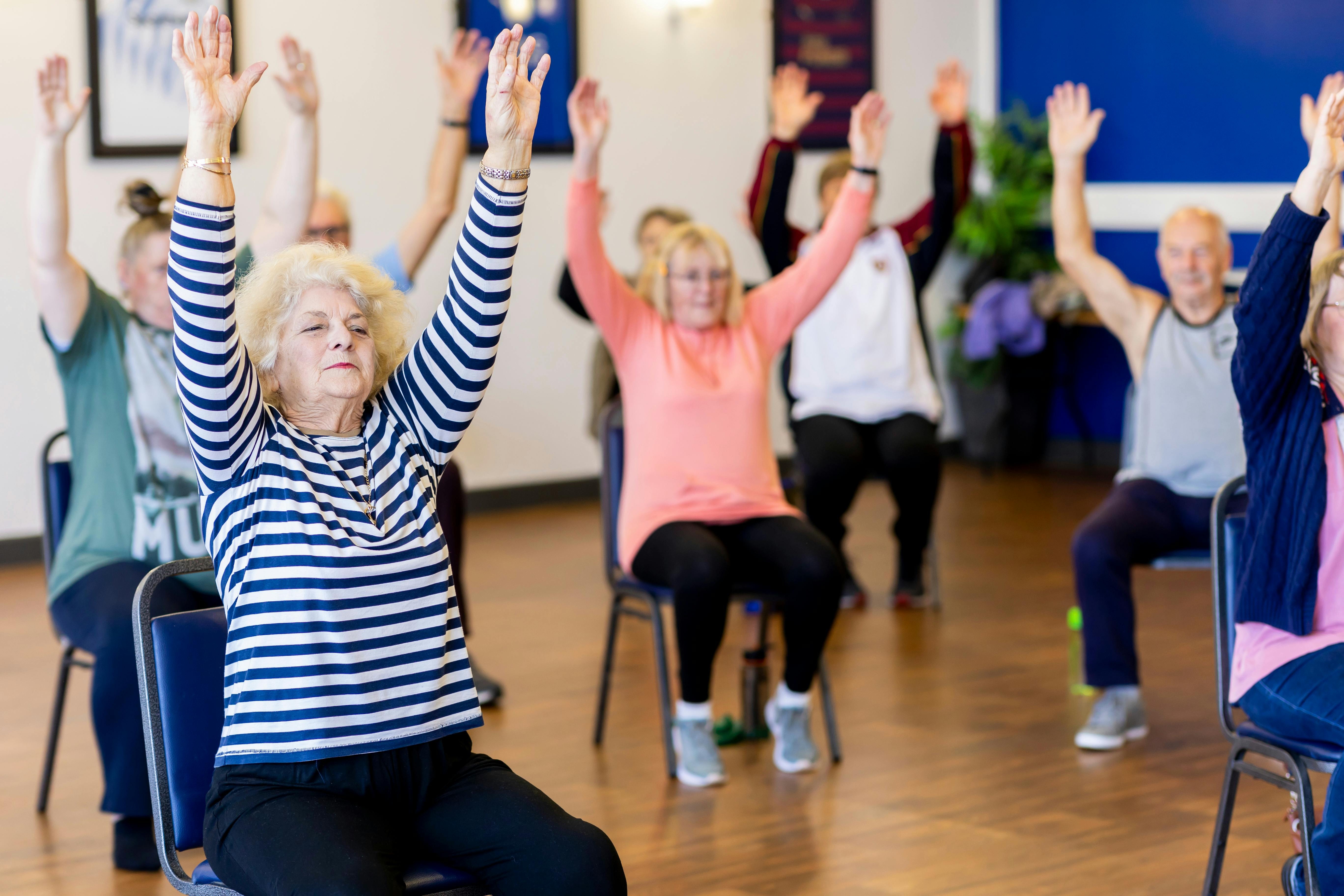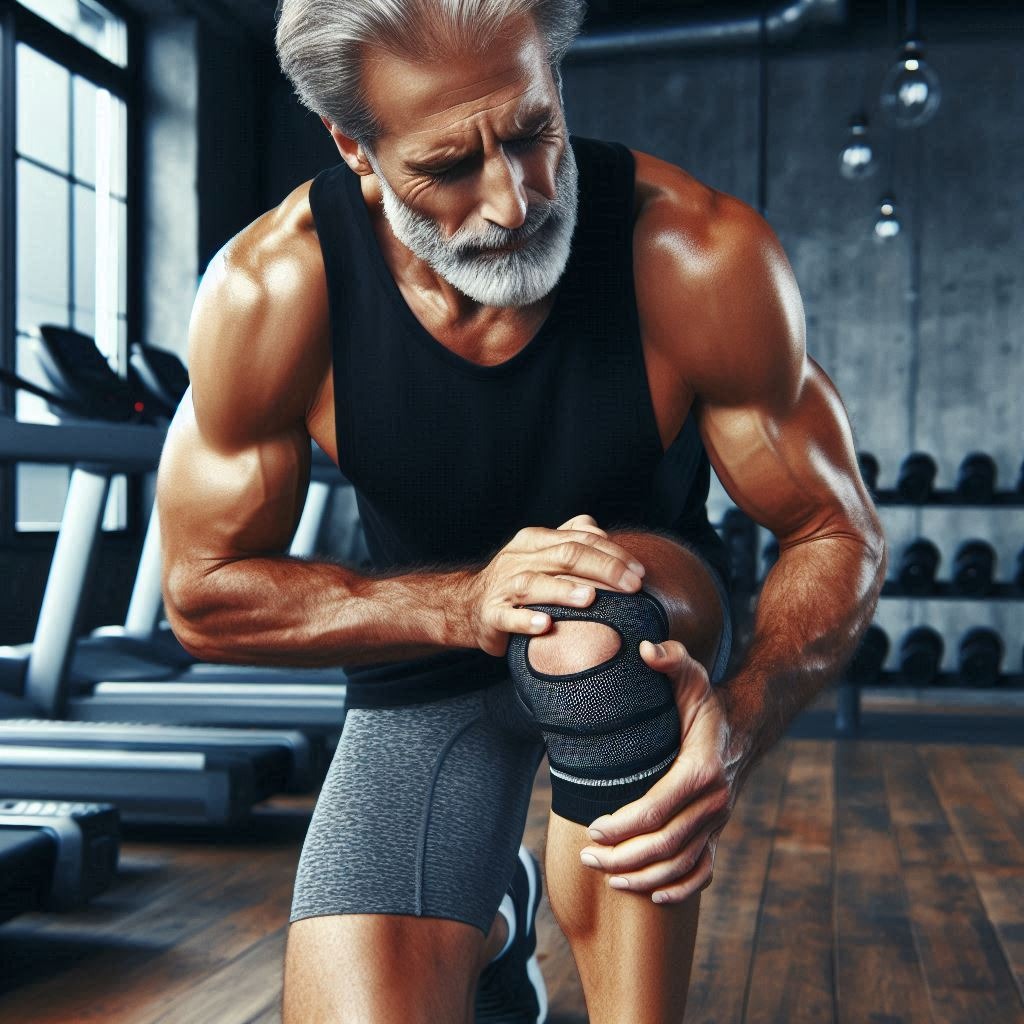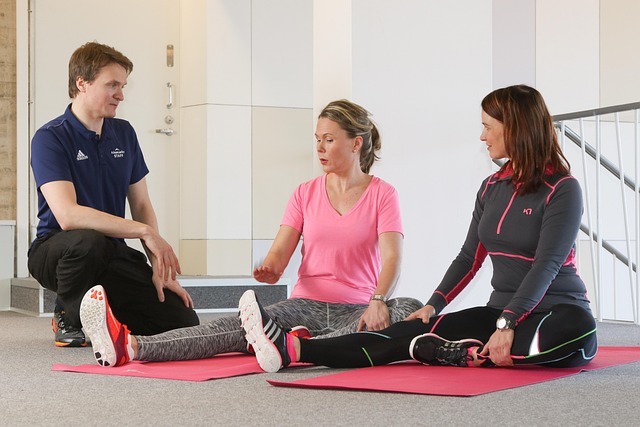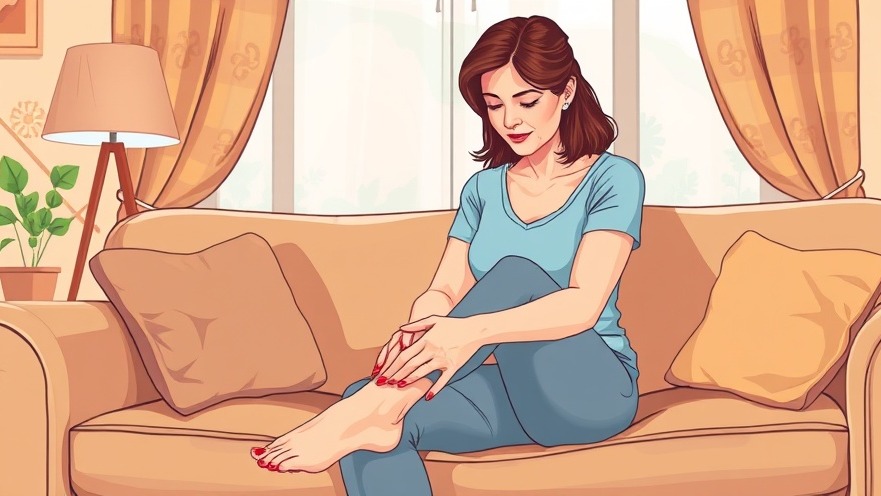
Did you know over 54 million adults in the U.S. experience joint pain daily?
If you’re one of them, finding safe and rapid pain relief can seem overwhelming. Fortunately, low impact exercises for joint pain can offer fast, life-changing benefits—helping improve flexibility, reduce knee pain, strengthen muscles, and keep you moving. By the end of this guide, you’ll have the tools and motivation you need to build a pain-relieving exercise routine, even if arthritis symptoms or chronic stiffness have been holding you back
Discover How Low Impact Exercises for Joint Pain Can Transform Your Daily Comfort
If you or a loved one are living with arthritis or enduring knee pain, low impact exercises for joint pain may be the game-changer you’re searching for. Unlike high-intensity routines that can put excessive pressure on your joints, impact exercises such as walking, swimming, tai chi, and cycling are gentle on your body while offering powerful relief. People with arthritis and those with sensitive knees find these exercises not only help alleviate joint pain but also improve overall mobility and quality of life.
Regular physical activity tailored to your body's needs can offer major improvements in joint flexibility, muscle strength, and even mood. By taking a proactive approach and adopting a low impact exercise routine, you’re investing in a future with fewer aches and more active, enjoyable days.

Why Low Impact Exercises for Joint Pain Matter: Key Benefits & Scientific Insights
Understand the science behind low impact exercises for joint pain, their benefits for knee pain, and the reduced stress on joints.
Explore pain relief outcomes and how impact exercises can alleviate joint discomfort while improving flexibility and function.
There’s a strong scientific consensus that low impact exercises for joint pain are superior for protecting your joints and reducing pain. Studies show that participants engaging in regular walking, tai chi, or light strength training report less knee pain and greater range of motion.
This is because these exercises minimize stress and microtrauma in your knees, hips, and ankles, while also encouraging circulation and lubrication of the joints. By enabling movement without harsh pounding or twisting, these routines allow those with arthritis symptoms to maintain an active lifestyle without aggravating injury or discomfort.
Beyond immediate pain relief, low impact activities promote muscle strength around affected joints, which is a key factor in stabilizing and protecting them. Over time, you’ll notice more confidence in your steps, whether tackling stairs, playing with grandchildren, or returning to hobbies that once felt out of reach.
Orthopedic Surgeon Dr. Kenneth Schmidt emphasizes that low-impact exercises are "gentle on your joints" and can help "strengthen your bones, improve your cardiovascular health, lose weight, lower your blood sugar, lower your harmful cholesterol levels, manage high blood pressure, prevent type 2 diabetes, improve your mental health, sleep better, and feel more energized," all while "protecting your joints from wear and tear."
What You'll Gain from Practicing Low Impact Exercises for Joint Pain
Increased mobility and range of motion
Lower risk of knee pain and arthritis flare-ups
How to set up an optimal exercise routine for pain relief
Strengthening muscles to support joint health

Committing to a low impact exercise routine offers several transformative benefits. First, you’ll experience increased mobility and improved range of motion. Gentle, consistent movement encourages your joints to stay loose, promoting greater flexibility even in the presence of arthritis or old injuries. Second, these exercises dramatically lower your risk of knee pain and arthritis flare-ups by reducing pressure on your joints and improving muscular support.
-
When you set up your exercise routine for joint pain, focus on regular variety—alternating swimming days with walking, or integrating tai chi with light resistance band stretches. Ultimately, strengthening the muscles surrounding your joints is essential for protecting your cartilage, minimizing painful friction, and bringing long-term stability to your joints.
Comparing Low Impact Exercises for Joint Pain: Walking, Cycling, Swimming & More
Exercise
Key Benefits
Recommended Frequency
Targeted Areas
Walking
Boosts circulation, relieves knee pain, improves mood and stamina, gentle on your joints
30 mins, 5 days/week
Knees, hips, ankles
Cycling
Builds leg muscle strength, low joint impact, helps with weight loss, joint flexibility
20-40 mins, 3-4 days/week
Legs, knees, lower back
Swimming
Reduces pressure on your joints, improves flexibility, full-body strengthening, pain relief
30 mins, 2-3 days/week
Full body, shoulders, knees
Tai Chi
Increases balance, reduces arthritis symptoms, stress relief, joint mobility
20-40 mins, 3-5 days/week
All major joints, core
Strength Training
Strengthens muscles to support joints, relieves knee pain, promotes bone density
2-3 days/week (non-consecutive)
Targeted muscle groups, knees, hips
As shown in the table, each low impact activity offers unique contributions to joint health. While swimming and cycling are preferable for those seeking maximum relief from knee pain , tai chi stands out for its balance and stress reduction properties. Combining a few of these activities as part of your regular exercise program will help you improve joint pain outcomes and keep workouts engaging.

The most crucial step is to choose a routine and schedule that fits your body’s needs, so you can stick with it consistently. If you’re living with arthritis or experiencing severe symptoms, always check with your healthcare professional before starting any new exercise to ensure safety and maximize benefits.
Step-by-Step Exercise Routines: Low Impact Exercises for Knee Pain and Total Joint Health
Gentle Strength Training for Knee Pain and Joint Pain
Sample bodyweight and resistance exercises
Gentle strength training is critical for relieving knee pain and bolstering joint stability. Simple bodyweight moves such as partial squats, seated leg lifts, and gentle lunges can be performed at home using a sturdy chair for support. If you're comfortable, resistance bands offer another layer of challenge without unnecessary joint strain, helping to strengthen the muscles around the knee and improve joint flexibility.
Aim for two sets of 10–12 repetitions for each movement, resting between each set. Strengthening the muscles that support your joints acts as an internal brace, significantly decreasing the frequency and intensity of knee pain episodes. Always warm up before any strength training session, and start slow, gradually increasing your workload as you build confidence and resilience.
Incorporating Tai Chi and Yoga for Joint Pain Relief
Best tai chi moves for joint mobility
Both tai chi and yoga are celebrated for their ability to alleviate joint pain and boost range of motion. Tai chi is a series of slow, controlled movements—a gentle, flowing martial art that targets balance, flexibility, and stress reduction. The best tai chi exercises for joint mobility include "Part the Wild Horse’s Mane" and "Wave Hands Like Clouds," which gently encourage joint movement while keeping impact to a minimum.

Incorporating yoga adds even more flexibility and strength, with poses such as Child’s Pose (for lower back relief) and Cat-Cow Stretch (improves spinal mobility). Regular practice of these routines keeps your joints lubricated and your muscles balanced—ideal for people with arthritis who want to regain confidence and control in their bodies.
How to Build a Low Impact Exercise Routine for Lasting Pain Relief
Tips for starting and maintaining an exercise routine for joint pain
Adapting impact exercises for arthritis symptoms
Learning to design a sustainable exercise routine for joint pain starts with taking it slow and listening to your body. Begin with sessions as short as 10 minutes, 3–5 times per week, gradually increasing duration and variety. Being consistent is key—daily gentle movement can provide better results than sporadic efforts.
Adapt your impact exercises based on how you feel each day: swap walking for water aerobics during arthritis flare-ups, or use a chair for added support. If pain intensifies or new symptoms appear, consult your healthcare professional. Remember, the goal is longevity, so every step forward (no matter how small) counts towards pain relief and restored mobility.
Best Practices: Safety, Warm-Ups, and Modifications for Low Impact Exercises for Joint Pain
Why warming up is crucial for alleviating joint pain
How to safely modify movements for knee pain or severe joint pain
Mistakes to avoid during impact exercises to prevent aggravation
Safety comes first in any exercise routine , especially for people with knee pain or chronic joint issues. Warming up—like performing gentle arm circles or marching in place for 3–5 minutes—increases blood flow, preps the tissues, and significantly decreases the risk of further injury.
When you modify movements, always prioritize comfort over intensity. Choose shorter strides for walking or reduce resistance during cycling. Never rush through exercises, and avoid bouncing or abrupt moves that might irritate sensitive joints. And most importantly, resist the urge to "push through pain"—pain is your body’s way of signaling for rest or adjustment.
Expert Perspectives: How Low Impact Exercises Alleviate Joint Pain
"Regular low impact exercise is one of the most effective ways to alleviate joint pain and promote long-term mobility." – Dr. Lisa Morrison, Orthopedic Specialist
Experts agree: consistent movement, even at a gentle pace, can maintain joint health and keep arthritis symptoms at bay. With the right plan, anyone can leverage low impact exercises to achieve pain relief, greater energy, and a more active, independent lifestyle.

Pain Relief Answers: People Also Ask About Low Impact Exercises for Joint Pain
What exercise is best for joint pain?
The best exercise for joint pain often depends on the individual, but swimming, tai chi, and gentle strength training are highly recommended for their minimal joint strain and proven pain relief.
What is the best way to relieve joint pain?
Combining low impact exercises, consistent stretching, strength training, and proper rest helps alleviate joint pain more effectively over time.
What am I lacking if my joints hurt?
Common deficiencies include vitamin D, calcium, and omega-3 fatty acids, all vital for joint health and arthritis symptom management.
How can I lubricate my joints naturally?
Regular movement, staying hydrated, and incorporating healthy fats into your diet are key habits for naturally lubricating joints.
Comprehensive List: Top 10 Low Impact Exercises for Joint Pain Relief
Swimming
Walking
Elliptical training
Cycling
Tai Chi
Chair exercises
Yoga
Strength training with bands
Water aerobics
Step-ups with support
Frequently Asked Questions About Low Impact Exercises for Joint Pain
-
How often should I perform low impact exercises for joint pain?
For best results, aim for 3–5 times per week with appropriate rest days. Adjust frequency based on how your body responds. Can low impact exercises worsen knee pain?
When done correctly, these exercises rarely worsen knee pain. If pain increases, adjust the intensity or frequency, and seek advice from a qualified medical professional.
What is the best time of day for an exercise routine with joint pain?
Many people with arthritis find mid-morning or early afternoon—once joints are warmed up—most comfortable for exercise. Listen to your body and experiment with different times.
Real-Life Stories: Success with Low Impact Exercises for Joint Pain
Case study of a patient significantly reducing knee pain through regular impact exercises and tai chi.
Consider Sarah, who struggled with knee pain and limited mobility from arthritis. After just three months of consistent low impact routines—starting with regular walking, introducing tai chi, and finally light resistance band work—she reported not only improved joint function but also a brighter mood and greater independence in daily life. Stories like Sarah’s are a testament to the difference consistency and the right approach can make.
Proven Strategies: Maximizing Pain Relief and Alleviating Joint Pain with Daily Movement
Consistency, cross-training, and listening to your body enhance pain relief and reduce arthritis symptoms.
Achieving the best results takes time and regular effort. Rotate different low impact activities throughout your week to engage various muscle groups and keep things interesting. Prioritize rest and adjust your routine if arthritis symptoms flare; it’s this mindful approach that prevents aggravation and promotes lasting quality of life.
Now’s the Moment: Take the First Step Towards Joint Pain-Free Living
Start your customized low impact exercise routine for joint pain today to improve mobility and rediscover freedom of movement.
There’s no better time than now to take control of your joint health. Choose an activity from the list above, set realistic goals, and celebrate every step forward. Your future self will thank you!
Videos on Low Impact Exercises for Joint Pain:
-
Expert-led video discussing modifications of exercise routines to accommodate various joint pain levels and alleviate arthritis symptoms.
Conclusion
Begin your low impact exercise journey today—prioritize daily gentle activity, listen to your body, and seek professional guidance when needed for a more flexible, pain-free tomorrow.
Sources
Incorporating low-impact exercises into your routine can significantly alleviate joint pain and enhance mobility. For instance, the article “ 5 Low-Impact Exercises to Alleviate Joint Pain ” outlines activities like swimming, cycling, and yoga, emphasizing their benefits in reducing joint stress and improving flexibility.
Additionally, “ Five Joint-Friendly Exercises to Keep You Moving and Pain-Free ” provides practical tips on incorporating walking and water workouts into your daily life to maintain joint health. If you’re serious about managing joint pain, these resources offer valuable insights to help you stay active and pain-free.
Explore our site for more wellness information HERE.
 Add Row
Add Row  Add
Add 







Write A Comment